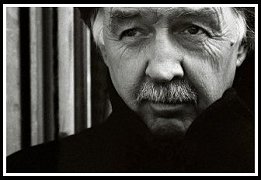PROFESSOR AMIN SAIKAL INTERVIEW - Wednesday 11th April, 2007
GEORGE NEGUS: Professor, it would appear that John Howard's
announcement of those extra 300 troops going to southern Afghanistan
has been pretty well received but there seems to be a touch of the
maybe too little, too late about it. What do you think?
PROFESSOR AMIN SAIKAL, ARAB AND ISLAMIC STUDIES –
ANU: Well I
think they could have done a lot better earlier but I suppose even now
that situation in Afghanistan is dire but not really desperate and
there is the possibility that the deployment of a larger number of
troops could make a difference in the country, but, at the same time, I
see tension between the purpose for which this new force is going to be
deployed and what the Afghan Government and some of its European NATO
supporters want to achieve.
GEORGE NEGUS: What you mean by that? What's the tension about?
PROFESSOR AMIN SAIKAL: The Afghan Government and some of its
European
NATO supporters are really heading towards negotiation with the Taliban
and President Hamid Karzai held a meeting with some of the Taliban
leaders last week for which he was really criticised inside the country
and yet the Australian troops which are going to be deployed will be
very much for the purpose of search and destroy missions and that could
really create real tension.
From one side they're really trying to negotiate and find a political
settlement for the Afghanistan problem. From the other side, obviously
the Australians and the Americans are determined to really destroy the
Taliban.
GEORGE NEGUS: So you don't think the Taliban solution is
enough yet. In
fact, you think there are negotiations going on, despite the fact we're
hearing about this Taliban revival, this Taliban resurgence, and that's
possibly one of the reasons for the extra 300.
PROFESSOR AMIN SAIKAL: Absolutely, and President Hamid Karzai
had a
meeting with the former foreign minister of the Taliban last week and
the whole objective is to see if they can find some sort of
reconciliation with some of the Taliban leaders and also it's going to
be very difficult for the Australian forces to identify who precisely
are the Taliban leaders and there are also quite a number of people who
are sympathising with the Taliban, but they don't really want to
prescribe the Taliban ideology or extremism at all. The reason they are
really supporting the Taliban in southern Afghanistan is because
they've become very disillusioned with the Karzai Government and its
international supporters.
GEORGE NEGUS: It would appear, though, that, despite those
attempts at
negotiation, the Taliban are talking about 10,000 battle-ready
fighters, 2,000 possible suicide attempts. They're in for a tough time,
the Australians, when they go there to the south. It's not going to be
a picnic.
PROFESSOR AMIN SAIKAL: No, absolutely not, but, at the same
time, I
think the Taliban have got good reason to exaggerate their strength at
this point. My feeling is, yes, they have reached a point whereby they
are able to carry out more suicide bombings and perhaps more military
operations against the coalition forces and against the international
assistance security forces, but, at the same time, I don't think they
are really in a position to either seriously threaten the government of
Hamid Karzai or, for that matter, dislodge the NATO forces from
Afghanistan. This is a very big operation for NATO, and if NATO fails
in Afghanistan, then it will have serious strategic implications
internationally for it.
GEORGE NEGUS: Don't go away. In fact, have a look at this next
report from Dateline's John Martinkus. He's been in the south, at the
giant
Kandahar air base, and, as you would know, that's a very, very key
staging point for any activity. Then we'll talk again.
REPORTER: John Martinkus:
Kandahar air base, southern Afghanistan. The NATO forces stationed here
include the US, Britain, the Netherlands and Australia. They fly
constant combat missions to support troops in the isolated forward
bases and to attack the Taliban.
REPORTER: With many roads in southern Afghanistan too dangerous for
NATO troops to travel, these helicopters form an integral part of a
strategy that's seen NATO place troops in areas where there's been no
foreign presence since the US takeover in 2001.
The sprawling Kandahar base is central to holding the south of
Afghanistan. Even inside this vast compound there are dangers. A rocket
recently hit this accommodation block housing Australians, wounding
three. There are 110 Australians flying and maintaining the two
Australian army Chinook helicopters that operate out of here. They
regularly fly to forward LZs - landing zones - to get troops in and
out, even under fire. Lieutenant Colonel Mick Prichter is their
commander.
LIEUTENANT COLONEL MICK PRICHTER, ADF: I have to say it certainly
hasn't been since the Vietnam War when Australian army aviators have
flown into what we call hot LZ, where they've been engaged by enemy
forces as they approach the LZ. There's been times when we've had to go
in and extract friendly troops out of an LZ and they've been under fire
as well.
There's mountains, weather, fog, snow and dust so when they go in to
land they tend to be enveloped in a cloud of either snow or dust
depending on the time of year. And then there's the threat from the
anti-coalition militias. Enemy forces have engaged our helicopters with
machine guns and rocket-propelled grenades. That can happen at any
time.
Most of the helicopter losses, particularly in the early days of
operations in Afghanistan, were lost during dust landings at high
altitude. What happens on a dust landing is, as the aircraft gets close
to the ground, it's a downwash, so its rotor downwash begins to stir up
the dust and so the last 30 or 40 feet of the landing the pilots may
well lose all visibility prior to touching the ground. And it's a
dangerous situation to be in.
Two weeks after I flew on the Chinooks, an American one came down in
exactly the same area where we had been. 8 US soldiers were killed, and
14 wounded. Mechanical failure was blamed, but the Taliban claimed to
have shot it down with a ground to air missile. The US special forces
on board were on their way home.
LIEUTENANT COLONEL MICK PRICHTER: We have a range of technological
solutions on the aircraft that help us to defend against those
missiles. We also employ tactics that really do preclude us being
engaged by those missiles most of the time.
In the '80s when the USSR was struggling to control Afghanistan, the US
provided the Afghan Mujihadeen with Stinger and Blowpipe shoulder-fired
missiles, which they used with devastating effect against the Russian
helicopters. When the Russians left, the CIA tried to buy back the
thousands of unused missiles in Afghanistan. But they only recovered a
fraction, and the fear now is that missiles have inevitably found their
way into the hands of the Taliban and al-Qa'ida.
This footage, shot by an SBS cameraman just recently, shows a missile
just missing one of the Australian helicopters. At least one US Chinook
in Afghanistan - shown here - has been confirmed as shot down, killing
all on board. In Iraq in January and February eight US helicopters have
been shot down - more than ever before. US command is seriously
concerned about the presence of missiles in both Iraq and Afghanistan.
The Australians Chinooks are, they say, the best armoured - and the
best armed.
SOLDIER: Puts out around 3,000 rounds a minute. They're also good for
reliability - they just keep going and going and going.
REPORTER: So they've been getting a bit of usage lately?
SOLDIER: Yeah. they've been used, yep, yep. Very effective, very
effective. The gunners left and right have got armour up to the waist
left and right and for doing deliberate action or carriage of special
persons we ballistic the whole floor. Normally we carry floor armour as
well. That's up to here.
REPORTER: So you're saying it's better armoured than the American and
the British ones.
SOLDIER: Very much better armoured.
I'm on board one of the Australian Chinooks for a 6-hour mission to
some of the most dangerous and inaccessible bases in Afghanistan. In
the darkness their night vision and technological superiority gives
them an edge over the Taliban. The two Australian helicopters are
escorted by US Black Hawk helicopters. I take that to be a good sign.
If they were expecting trouble they would be using the more heavily
armed Apaches. Shortly after we take off there is an alarm.
Fortunately, it was a false one.
The guns are loaded and tested. After a long, cold flight through
snow-covered mountains and a refuel stop we arrive at the US Special
Forces outpost. These troops are part of the 12,000 under direct US
command. They have been manning small outposts like this since 2001.
Small groups of special forces with Afghan soldiers. Their role is to
actively hunt out the insurgents. It was how the US tried to control
the south before NATO arrived and moved in, in force. The huge amount
of Taliban NATO encountered in the last year was a reflection on how
ineffective this light footprint strategy was.
The next part of the night's mission is to move a group of Romanian
troops who are on operation in Zabul province. They are moving to
establish a new outpost. But concerns have been raised about the poor
state of their ageing eastern bloc equipment - the same as used by the
Taliban. Many countries won't allow their troops into such a dangerous
area. The expected Taliban offensive in spring will test these new
troops in their remote outposts.
It's time to head back and the helicopters fly exceedingly close to the
ground to avoid missiles and ground fire. But at night another hazard
is hitting a mountain. We cross a mountain pass with only metres to
spare. The rear loader almost falls out in the unexpected turbulence.
As we approach Kandahar, flares are fired to redirect any heat-seeking
missiles away from the helicopter.
SOLDIER: It's a magnificent country. It's a beautiful place to be. It's
so rugged that it is beautiful. It's very, very challenging as far as
the flying goes. It makes it a tough day out for us and it gets even
harder by night.
These two Australian Chinooks, and the soldiers that fly and maintain
them, are back in Australia but already people within NATO are asking
for them to be replaced with more Australians, and NATO commanders are
saying this war will take 10 years to win.
GEORGE NEGUS: And, as John said, those Chinooks are currently
back here
in Australia but they'll be sent back as part of this latest
appointment. Do you agree with that NATO assessment that it will take
10 years to win over the Taliban, to beat them, in fact?
PROFESSOR AMIN SAIKAL: I think they may even take longer than
that.
GEORGE NEGUS: A lot longer than 10?
PROFESSOR AMIN SAIKAL: Longer than 10, because it is not
really a
question of building security in Afghanistan, but also engaging in
massive economic reconstruction of Afghanistan, as well as really
building a very sound, clean and effective system of governance. At the
moment Afghanistan is suffering very badly from the lack of it and the
lack of an accelerated process of reconstruction - in other words the
ordinary Afghans have not really seen the benefits of the current
transformation of Afghanistan and as long as that remains the case
there is a vacuum for the Taliban and their supporters to exploit to
their benefit.
GEORGE NEGUS: So you're saying the solution is far from just a
military
one?
PROFESSOR AMIN SAIKAL: Absolutely, and I think it has to be
The
security drives will have to be accompanied by political and economic
drives to really accelerate the process of reconstruction. And the
reconstruction process has really badly faltered in the country and
although President Karzai himself is a forward looking individual, but
he has not been able to create a unified really elite and a unified and
effective system of administration in the country. His government has
grown to be thoroughly corrupt and more, perhaps, corrupt than any
Afghan government in the modern history of the country.
GEORGE NEGUS: Should we be looking across the border still?
Let's
broaden our little discussion here? Should we be looking across the
border? Isn't it the case that the real problem still exists in
Pakistan. It is still the nursery of al-Qa'ida and therefore the
Taliban?
PROFESSOR AMIN SAIKAL: Well, there's no question about that,
but, at
the same time, Afghanistan has its own vulnerabilities and the
Pakistanis are exploiting those vulnerabilities. What the Karzai
leadership and its international supporters need to do is to close
these vulnerabilities inside Afghanistan so that the Pakistanis will
not be able to do what they've been tried to do. If you're sitting in
Islamabad and you're looking at situation in Afghanistan, you will see
Afghanistan as a security liability and therefore you will do
everything possible to have a stake in the politics of the country,
that when these foreign troops leave you will be in a position to
protect your only regional interest, and so what the Afghans need to do
is to close those vulnerabilities so that the Pakistanis will not feel
insecure enough and, at the same time, the Afghans will feel secure
enough, not only to rebuild their country but also to achieve a
capability whereby they could defend their country.
GEORGE NEGUS: Professor, thanks for your time. A much longer
discussion, I suspect, but thanks again. We'll talk again.
PROFESSOR AMIN SAIKAL: My pleasure. Thank you.





